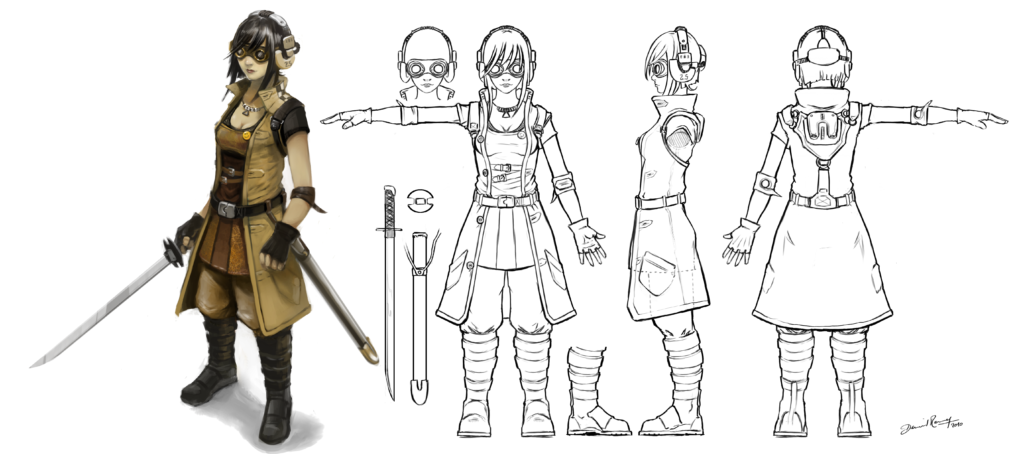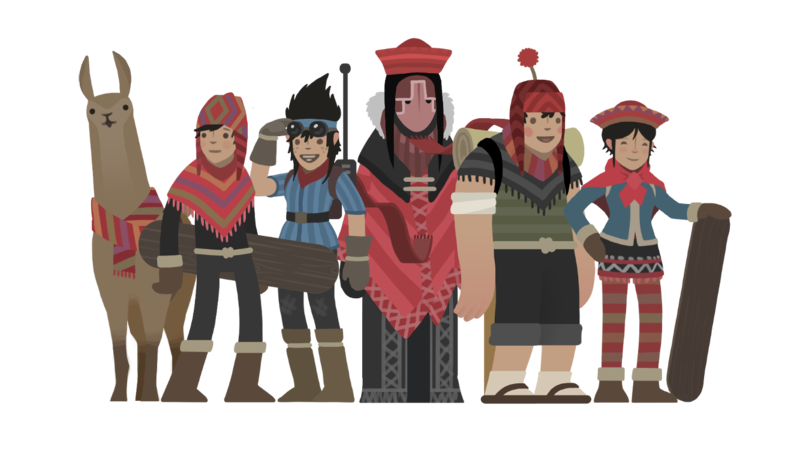
Taking an idea and transforming it into a full-blown character isn’t easy. Even established creatives with years of experience can get hung up trying to create new characters that have just the right look and feel to tell the story they’re hoping to tell. Great artists make this process look effortless, but in truth it’s anything but. However, if you keep these basic rules in mind, developing a character from idea to design is a process that you too can master.
Clarify your audience
Your audience will determine the core features of your character. For example, character design for small children generally centers on bright colors and simple shapes. If you’re designing a character for a client, knowing their brand, voice, and target audience is crucial; everything that character does and says will need to flow from this initial recognition.
Focus on the medium where the character will live
Designing for a movie screen? A mobile phone screen? Although they share many of the same steps, these are very different tasks. The smaller the final product is, the less critical (or visible) tiny details will be, so pay attention to this issue as you allot your time.
Carefully choose colors
Colors are so important to characters; they communicate personalities before anything is done or said. Darker and muddier shades usually indicate a morally ambiguous or evil characters; pale pastels tend to work best for innocent characters; and classic bright comic book tones go a long way toward depicting a hero. Make sure your color choices make psychological sense
Once you’ve settled on the basic color family or scheme, try not to go too crazy. Too much color can look confusing. Go for three or fewer base colors, with a few value variations here and there. Anything more is overkill.

Do your homework
It never hurts to learn from the successes and mistakes of others. Look at character designs that are out there now to see what works and what doesn’t.
Choose a central inspiration for your character
What is the one thing about your character that you want people to “get” in an instant? Is she a science nerd? Is he a foodie? Whatever that inspiration is, let it affect every detail of the character, from head to toe. Clothing, hairstyle, mannerisms, accessories, should all be touched by that inspiration.
Create the right environment
Where is this character going to exist? This character’s world is going to be central to how it expresses itself and acts; the behavior of your character hinges on its environment.
Make your character unique
Let’s face it: your character isn’t going to be the first. You might not create the first robot dog who runs a record store, however, you can make him uniquely yours. You’ll need to gift that creation with unique, captivating visual traits that set it apart from all other characters. In other words, that character’s singular personality should be visually expressed so that you can literally see that the character is one of a kind. Strive to create a character so notable that you can pick it out of a lineup at a distance, or even when it’s just a silhouette.

Repeatability
While you want your design to be unique, you don’t want it to be so unique that you can’t draw it again. Even if you work in 3D animation and make use of the latest technology, you should still be able to replicate your character. Make sure you can draw the character from multiple angles and in multiple positions. Avoid overly complex hairstyles, clothing patterns, tattoos, or anything else that’s too complicated to replicate.
Exaggerate
Remember, this is a character, not a real person. Characters are supposed to be larger than life. It’s these over the top traits that make them immediately identifiable. Exaggerate the character’s most important traits for emphasis, impact, or humor.
Accessorize
You can communicate even more about your character through little details like accessories. These might literally be accessories like Charlie Brown’s zig zag shirt, or they might be more figurative accessories like the cloud of dust that always surrounded Pig Pen. Either way, be sure the accessories you give your character are an extension of your character’s inner self.
Create an origin story
Even if you never use it, create your character’s backstory and origins for yourself. A back story will help you shore up all the details. As the creator, you need to know these details, so you can best decide how and why your characters do the things they do. Just like choosing an inspiration, creating a backstory will give you a frame of reference that should touch every aspect of your character. This will keep the character coherent and consistent.
Get feedback
Once you’ve done some work on your character and you’re getting somewhere, show it to a few people you trust. Choose people who will really give it some time, and who will go further than just telling you whether they like it or not. Ask how much they understand about the character, what they’re missing (or what you’re not yet communicating well enough), and what changes you can make to improve the character.
Conclusion
If you create your own characters, you know what it feels like to bring an inspiration to life. You also know that the process isn’t effortless; it demands careful consideration of each element of your creation. Paying attention to the various details in the design of your character ensures that you’ll be able to turn an idea into a character that looks and feels alive—not realistic, necessarily, but alive!